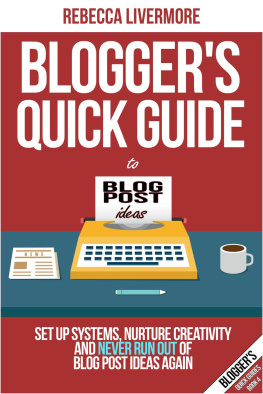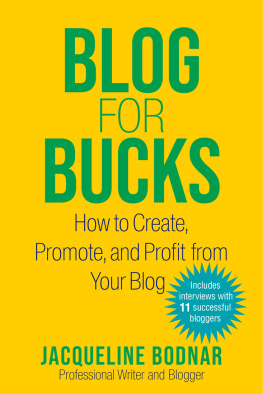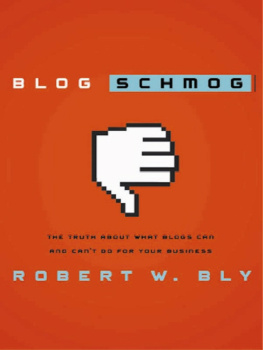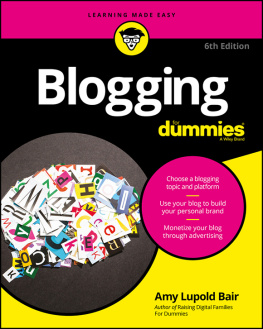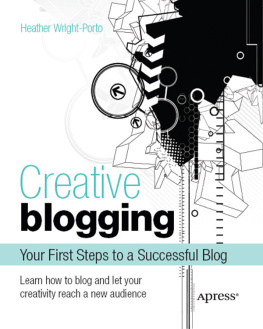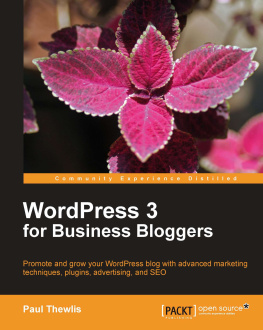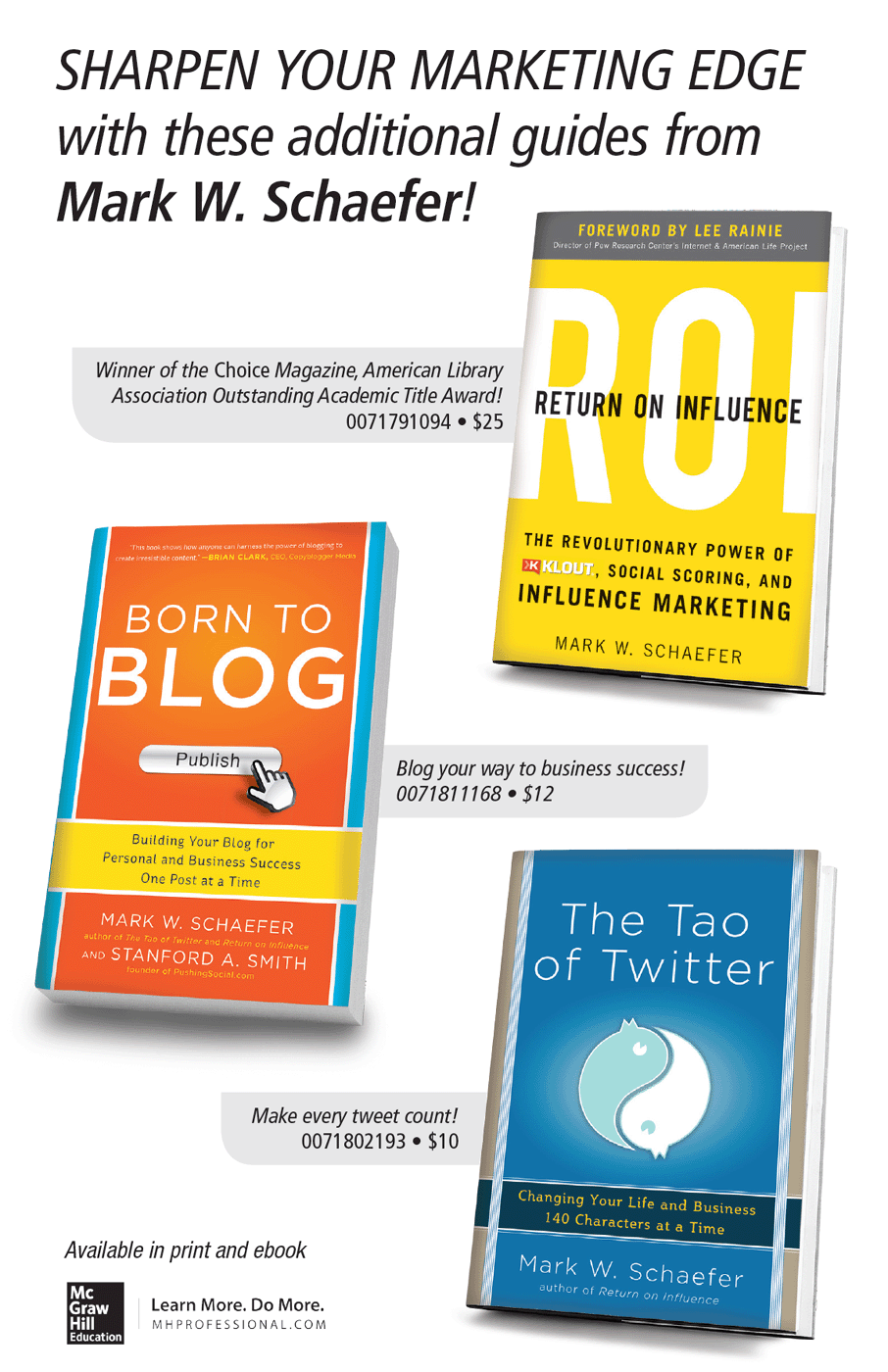

Copyright 2013 by Mark W. Schaefer and Stanford A. Smith. All rights reserved. Printed in the United States of America. Except as permitted under the United States Copyright Act of 1976, no part of this publication may be reproduced or distributed in any form or by any means, or stored in a database or retrieval system, without the prior written permission of the publisher.
ISBN: 978-0-07-181117-0
MHID: 0-07-181117-6
The material in this eBook also appears in the print version of this title: ISBN: 978-0-07-181116-3, MHID: 0-07-181116-8.
eBook conversion by codeMantra
Version 2.0
All trademarks are trademarks of their respective owners. Rather than put a trademark symbol after every occurrence of a trademarked name, we use names in an editorial fashion only, and to the benefit of the trademark owner, with no intention of infringement of the trademark. Where such designations appear in this book, they have been printed with initial caps.
McGraw-Hill Education eBooks are available at special quantity discounts to use as premiums and sales promotions, or for use in corporate training programs. To contact a representative please e-mail us at bulksales@mcgraw-hill.com.
This publication is designed to provide accurate and authoritative information in regard to the subject matter covered. It is sold with the understanding that neither the author nor the publisher is engaged in rendering legal, accounting, or other professional service. If legal advice or other expert assistance is required, the services of a competent professional person should be sought.
From a Declaration of Principles Jointly Adopted by a Committee of the American Bar Association and a Committee of Publishers and Associations
TERMS OF USE
This is a copyrighted work and McGraw-Hill Education and its licensors reserve all rights in and to the work. Use of this work is subject to these terms. Except as permitted under the Copyright Act of 1976 and the right to store and retrieve one copy of the work, you may not decompile, disassemble, reverse engineer, reproduce, modify, create derivative works based upon, transmit, distribute, disseminate, sell, publish or sublicense the work or any part of it without McGraw-Hill Educations prior consent. You may use the work for your own noncommercial and personal use; any other use of the work is strictly prohibited. Your right to use the work may be terminated if you fail to comply with these terms.
THE WORK IS PROVIDED AS IS. McGRAW-HILL EDUCATION AND ITS LICENSORS MAKE NO GUARANTEES OR WARRANTIES AS TO THE ACCURACY, ADEQUACY OR COMPLETENESS OF OR RESULTS TO BE OBTAINED FROM USING THE WORK, INCLUDING ANY INFORMATION THAT CAN BE ACCESSED THROUGH THE WORK VIA HYPERLINK OR OTHERWISE, AND EXPRESSLY DISCLAIM ANY WARRANTY, EXPRESS OR IMPLIED, INCLUDING BUT NOT LIMITED TO IMPLIED WARRANTIES OF MERCHANTABILITY OR FITNESS FOR A PARTICULAR PURPOSE. McGraw-Hill Education and its licensors do not warrant or guarantee that the functions contained in the work will meet your requirements or that its operation will be uninterrupted or error free. Neither McGraw-Hill Education nor its licensors shall be liable to you or anyone else for any inaccuracy, error or omission, regardless of cause, in the work or for any damages resulting there from. McGraw-Hill Education has no responsibility for the content of any information accessed through the work. Under no circumstances shall McGraw-Hill Education and/or its licensors be liable for any indirect, incidental, special, punitive, consequential or similar damages that result from the use of or inability to use the work, even if any of them has been advised of the possibility of such damages. This limitation of liability shall apply to any claim or cause whatsoever whether such claim or cause arises in contract, tort or otherwise.
Contents
Introduction:
Were You Born to Blog?
We love to blog.
In fact, it is the best part of our jobs. And weve had some successboth of us have developed successful personal blogs that have led to new business connections, personal and business benefits, and yes, even new customers.
Weve also built blogs for dozens of organizations from Fortune 500 giants to small retailers, schools, government agencies, and nonprofits.
Blogs are the content engine driving the social web. In addition to providing a unique voice of authority, they are undeniably critical to any digital marketing initiative. Even if nobody reads them, blogs are a powerful contributor to search engine optimization efforts, creating PR opportunities, and providing a platform in a time of crisis.
The many important and proven benefits of blogging led us to have many lively conversations around this one question: Why do so many blogs suck and what can we do about it?
The idea for this book was born!
To let our personalities come through in this text (which will make it so much more interesting), well occasionally pause and tell individual stories to make a point. Lets start that now.
MARK: My blog {grow} was squarely in the suck category for nearly a year. I started it as an experiment. After all, if I was going to consult about marketing and teach it, I needed to immerse myself in the new media.
As a classically trained marketer, I started my blog with a well-defined marketing message that I wanted to deliver to my target audience of business prospects. It sounded good on paper.
Two things happened. First, nothing happened! I just got no traction at all and very few comments or engagement for months. Second, I became bored.
So instead of sticking to a script, I started to relax and just be myself and blog about whatever interested me. I told stories about my marketing journey and connected the dots between traditional marketing and social media. I challenged myself to try different styles. I let my funny side come through and experimented with video blogs.
Then, an amazing thing happened. Instead of me finding my target audience, my target audience found me! The blog started to grow and attract international attention. I was on to something, and this led me to reflect on the common themes of my success and the success of others. Was it possible for an individual, or a company, to be built to blog? What made the best blogs sing and hum with excitement?
STANFORD: I know the exact moment I became a Lady Gaga fan. It was June 29, 2010, the moment my post Lady Gagas 8-Point Guide to Larger than Life Blogging was published.
I wrote the post as a way to cleverly (in my opinion) point out how the pop icon and social media maven could offer some advice to new bloggers. I had run across a Rolling Stone article about Lady Gaga and immediately saw a decent blog topic.
In my gut, I knew that I had a cool concept. Lady Gaga was in the news after flipping off Mets fans, and I figured I could get a few extra eyeballs by drafting behind the news story.
The post took a week to write since I chickened out at least three times, refusing to publish the post until I had exhausted every excuse. The mouse icon hovered over the publish button for a full 10 minutes before I quickly clicked the button, stood up, and walked away from my desk.
Next page

